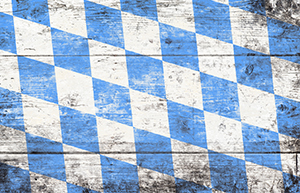Introduction
A parallelogram is a geometric figure with opposite sides parallel and equal in length. In the picture below notice that when two parallel lines intersect two other parallel lines, a parallelogram is formed, or many, as in the case here.

A parallelogram is a specific type of quadrilateral (a four-sided figure). As an example, you could say that a quadrilateral represents a car, and the parallelogram is a corvette. A corvette is a car, but a specific type of car, just like a parallelogram is a specific type of quadrilateral.

In this lesson, we will learn how to tell if a quadrilateral is a parallelogram.
Following successful completion of this lesson, students will be able to...
- Prove quadrilaterals are parallelograms including coordinate geometry
Essential Questions
- What are the differences and similarities between squares, rectangles, and rhombi?
- How are parallelograms, kites, and trapezoids different?
- How can you use coordinates to find perimeters and areas of quadrilaterals in the coordinate plane?
- How does the sum of the interior angles of a triangle relate to the sum of the interior angles of polygons?
Enduring Understandings
- Polygons can be classified using properties of sides and angles.
- There is a relationship between the number of sides of a polygon and the sum of its interior angles.
- Each type of quadrilateral has properties that make it unique.
- We can use known properties to verify if a quadrilateral is a parallelogram.
- Different types of quadrilaterals have their own unique properties.
- The two bases of a trapezoid are formed by parallel lines.
- Different types of quadrilaterals have their own unique properties.
- Coordinates can be used to compute perimeter and area of quadrilaterals.
The above objectives correspond with the Alabama Course of Study: Geometry with Data Analysis standards: 31c and 32.